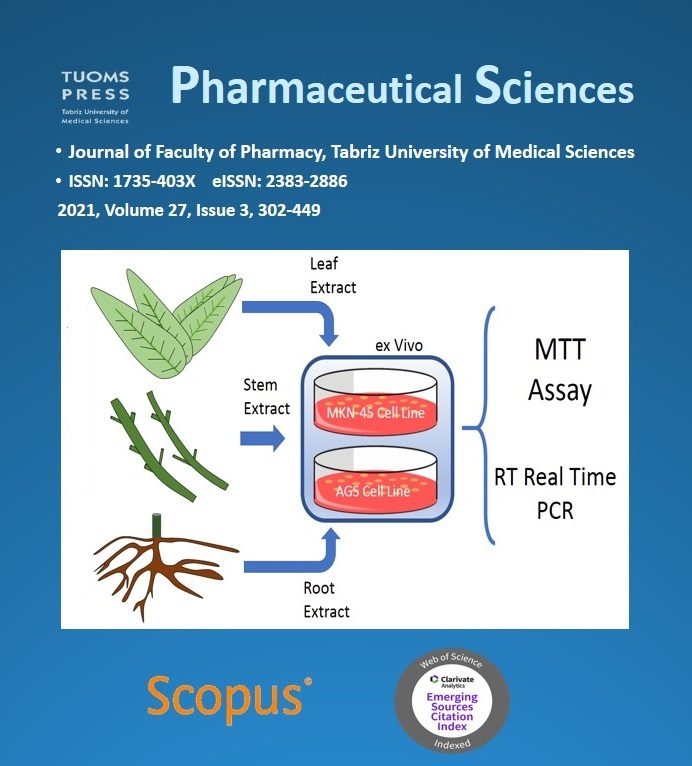
Repository Akfar Bumi Siliwangi
Anti-Inflammatory and Analgesic Activities of 7-Chloro-4-(Piperazin1-yl) Quinoline Derivative Mediated by Suppression of Inflammatory Mediators Expression in Both RAW 264.7 and Mouse Models

Description:
Background: 4-Aminoquinoline derivatives possess various potential biological properties.
The introduction of additional piperazine heterocyclic pharmacophoric moiety tends to have
profound impact in increasing the activity. The present work was undertaken to investigate the
in-vitro and in-vivo anti-inflammatory activity as well as the peripheral and central analgesic
activities of compound 1-(4-(7-chloroquinoline-4-yl)piperazin-1-yl)-2-(4-phenylpiperazin-1-yl)
ethanone (5) in experimental models.
Methods: The percentage inhibition of the lipopolysaccharide induced NO release of 7-chloro4-(piperazin-1-yl)quinoline derivatives 1-9 was determined in RAW 264.7 murine macrophage
model. Western blot analysis was performed to evaluate the effect of compound 5 on protein
expression of inducible nitric oxide synthase (iNOS). Gene expression of inflammatory markers
was evaluated using real-time polymerase chain reaction. The peripheral and central analgesic
activities of compound 5 were evaluated in mice using writhing and hot-plate tests, respectively.
Anti-inflammatory activity was assessed using carrageenan-induced paw edema assay in mice
and serum NO and COX-2 levels were measured.
Results: Compound 5 demonstrated the highest NO inhibitory activity that was accompanied
by inhibition of iNOS protein expression and decreased gene expression levels of inflammatory
markers. It revealed a potential peripheral analgesic effect through inhibition of abdominal
writhing in mice treated with doses of 15 and 30 mg/kg and its effect was comparable to diclofenac
sodium. Compound 5 possessed an analgesic activity starting from 15 min post administration
and reached its peak at 45 min which was significantly higher than that of tramadol hydrochloride
suggesting its potential as central analgesic agent. It also showed percentage of inhibition of
edema of 34, 50 and 64% at 1, 2, and 3 h respectively, post carrageenan challenge together with a
significant decrease in serum NO and COX-2 levels.
Conclusion: The remarkable anti-inflammatory and analgesic activities of compound 5 could
be attributed to the advantageous introduction of the heterocyclic 7-chloro-4-(piperazin1-yl)
quinoline scaffold incorporated with N-phenylpiperzine functional groups linked together with
the ethanone pharmacophoric chain.
URL:
http://103.158.96.210:88/web_repository/uploads/ps-27-3261.pdf
Type:
Journal
Document:
Diploma III Farmasi
Date:
23-06-2024
Author:
Mona Elsayed Aboutabl